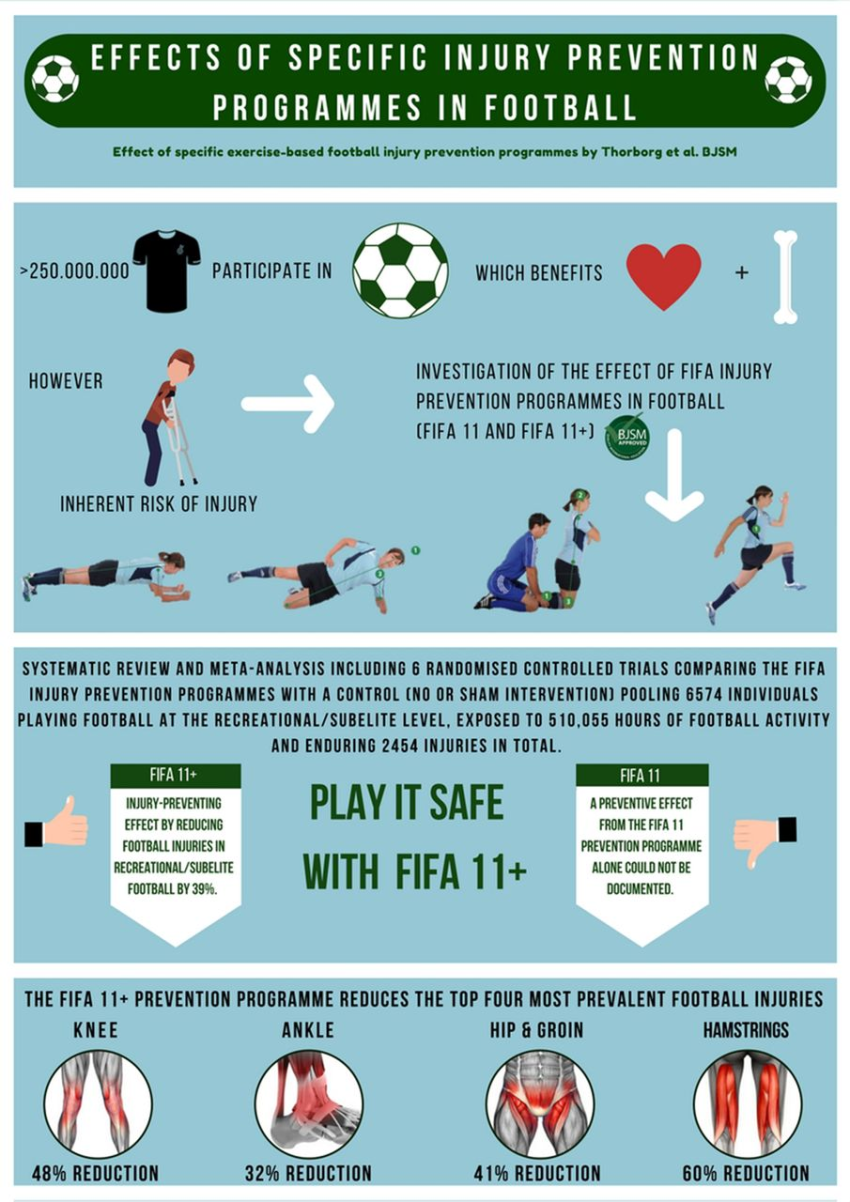Injury prevention in football is a critical aspect that every player and coach must prioritize to ensure a safe and enjoyable gaming experience. As the sport continues to grow in popularity, the necessity for effective football injury prevention strategies has become increasingly important. Understanding and implementing injury prevention strategies not only helps players maintain their peak performance but also safeguards their long-term health. This blog post will explore various football training tips and coaching techniques designed to minimize injury risks on the field. By focusing on systematic approaches, teams can foster a culture of safety, ultimately enhancing their readiness and performance in each match.
When discussing athlete safety, terms such as safeguarding against sports injuries and enhancing player wellness come to the forefront. The importance of injury prevention in football extends to all corners of the athletic community, influencing how teams train and compete. Emphasizing comprehensive training techniques and injury prevention tactics is essential for improving overall player durability and performance. By recognizing the critical role of these safeguarding practices, coaches and athletes alike can advance their understanding and application of effective football coaching techniques to mitigate risks during both practice and competition.
Essential Injury Prevention Strategies for Football Coaches
Injury prevention in football heavily relies on the implementation of effective coaching techniques. Coaches play a pivotal role in establishing a safe training environment for their players. This encompasses designing practice sessions that incorporate a variety of exercises intended to increase strength, flexibility, and endurance. By utilizing injury prevention strategies such as the FUNBALL program, coaches can reduce the prevalence of injuries on the field significantly. These programs also promote a collective approach to injury prevention, encouraging players to take accountability for their physical well-being.
Moreover, football training tips for coaches should focus on regular injury audits and communication. By keeping track of injury reports and player health, coaches can tailor their training sessions to meet the needs of their athletes. Incorporating real-time feedback mechanisms helps in adjusting the intensity of training based on players’ health conditions, thereby minimizing the risk of injury. Coupled with a comprehensive warm-up routine that encompasses dynamic stretching and sport-specific movements, coaches can effectively minimize injuries and enhance player performance.
Football Training Tips for Preventing Injuries in Sports
When considering injury prevention strategies in football, one of the most imperative aspects is the implementation of robust training guidelines. Establishing a structured training routine that includes injury prevention exercises should be a priority for all teams. Emphasizing strength training and agility workouts not only boosts performance but also prepares players to handle the physical demands of the game. These football training tips focus on building muscle resilience and emphasizing coordination, which are critical in preventing common injuries often seen in the sport.
Additionally, educating players on safety protocols is vital in ensuring their well-being. Coaches should incorporate education about proper techniques for tackling and falling to minimize injury risks during confrontational moments on the field. Regular health assessments should also be encouraged, emphasizing the importance of listening to one’s body and reporting any discomfort. By fostering a culture of safety and awareness, teams can significantly reduce the potential for injuries, contributing to a healthy and competitive sporting environment.
Frequently Asked Questions
What are effective injury prevention strategies in football?
Effective injury prevention strategies in football include implementing structured exercise programs like FUNBALL, which focuses on strength and flexibility to reduce injuries. Additionally, comprehensive warm-up routines that include stretching and strength training, along with regular monitoring of player health, are essential. Educating players on safe techniques for tackling and falling can also significantly lower the risk of injuries. These strategies, when consistently applied, help foster a safer playing environment.
How can football coaches implement injury prevention in their training sessions?
Football coaches can implement injury prevention in their training sessions by incorporating specific football training tips such as establishing comprehensive warm-up routines that prepare players physically. Integrating strength training and agility drills will enhance players’ resilience and coordination, thus minimizing injury risks. Furthermore, educating athletes on safety protocols, and regularly monitoring player health and performance can create a culture of safety and preventative care within the team.
| Key Area | Key Points |
|---|---|
| Introduction | Importance of injury prevention for all involved in football, rising awareness about athlete safety. |
| Significance | Contact nature of football increases injury risks; structured training programs are essential. |
| Recent Insights | The FUNBALL program effectively reduces injuries in young players through structured exercise. |
| Monitoring Rates | Consistent monitoring leads to lower injury rates, fostering accountability within teams. |
| Strategies for Coaches and Players | Comprehensive warm-ups, strength training, and safety education minimize injury risks. |
| Fantasy Football | Monitoring player health is crucial for successful fantasy team strategies. |
| Conclusion | Ongoing research and implementation of effective strategies enhance safety for athletes. |
Summary
Injury prevention in football is vital for ensuring the safety and well-being of athletes. As the sport continues to grow in popularity, so does the need for effective strategies and practices that minimize injury risks. By adopting structured programs like FUNBALL and implementing comprehensive warm-up routines, players can enhance their physical resilience. Coaches play a critical role in fostering a culture of safety through regular monitoring and educating players on safe practices. Emphasizing injury prevention not only contributes to better health outcomes for players but also enriches the overall experience of the game, allowing football to be enjoyed safely by all involved.
